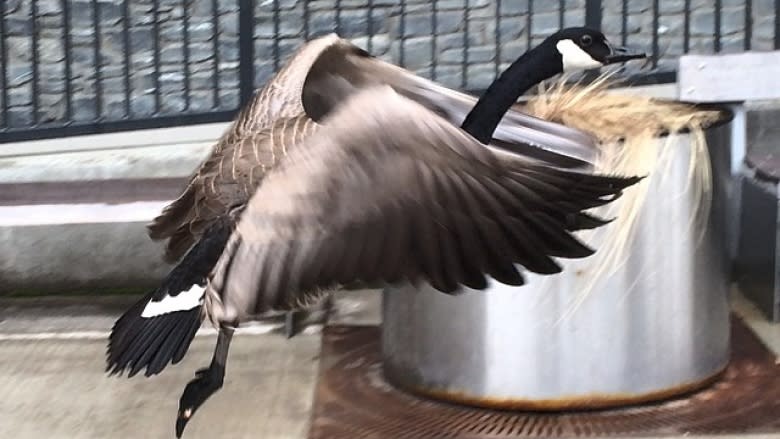 Daily Brew
Daily BrewCanada Goose cull planned in B.C., but euthanization method questioned

Go north onto the Saanich Peninsula from Victoria, B.C., and you’ll find farms, an airport – and lots and lots of Canada geese.
So many, in fact, that area farmers are fuming. There’s also rising concern about possible goose strikes at Victoria International Airport.
A cull is imminent. A plan is in place to euthanize 250 geese in an effort to restore balance.
“We’re worried about them bringing down a jet into our town, just on the safety end of it,” Sidney, B.C. mayor Steve Price told the Victoria Times-Colonist last week.
“But we’re also to the point where we’re losing the use of some of our public parks because of the amount of goose droppings.”
The biggest concern, though, is farming. Saanich-area farmers are consistently losing thousands of dollars in crops to ever-flourishing swarms of raiding Canada geese.
“We tend to find that the geese, no matter what you do, they get very smart. They'll figure it out," farmer Bryce Rashleigh told the CBC in May.
“One farmer chases them off his property, they go to the next farm, and he chases them off. It sort of becomes just move, move, move, but we never really solve the problem.”
Related stories:
Canada goose attacks: How to avoid them during the spring peak
Canada goose recovering after sitting on burning nest to save her eggs
Canada goose 'Spawn of Satan' terrorizes University of Waterloo
Keeping a slightly distant eye on all of this is the British Columbia Society for the Prevention of Cruelty to Animals (BC SPCA).
“It appears that, for the last couple of years, the CRD (Capital Region District) has been going through a consultation process,” Dr. Sara Dubois, chief scientific officer of the BC SPCA tells Yahoo Canada.
“We haven’t been involved in that process, so we’re just looking at the information that’s available online through their reports. They’ve been studying the goose issue for a few years, with both federal and provincial government input, and they have decided that a reduction in the population would, over time, reduce the effects on the local farming community.”
Dubois – also an adjunct professor of the Faculty of Land and Food Systems at the University of British Columbia – concedes the goose cull may be necessary, and justified.
“The measure that you have to prove to get a permit to cull geese in Canada is very high,” she explains. “The federal government’s requirements are significant, and they’ve gone through that process and demonstrated the necessity for this.”
Her concern is over how the geese will be killed. The current plan is to break the birds’ necks.
“We know that for birds over two kilograms, that breaking the necks – or cervical dislocation, as they call it – of a conscious bird is inappropriate,” Dubois cautions.
“It is not sanctioned by the American Veterinarian Medical Association or the Canadian Council of Animal Care standards. We are very keen to see what their standard operating procedure is, so we can ensure that they won’t be committing an offence.”
District of Saanich councillor Susan Brice told Yahoo Canada via email that no offence will be committed.
“The cull will be conducted in a humane manner, according to Environment Canada, Canadian Wildlife Services Best Practices for Killing Birds and Disposing of Carcasses, Canada Goose Management and the Province of B.C. Standard Operating Procedures for Canada Goose Euthanasia for Depopulation,” she wrote. “The method of cervical dislocation is being used to ensure that death will occur quickly. There will be minimal confinement and handling times.”
The geese in question are descendants of a special flock of non-migratory geese, introduced to the area in the sixties and seventies, to make Saanich more attractive to hunters. It worked out well for the birds, but now their numbers are posing increasing problems.
“Unfortunately, we don’t know if this cull is going to make any difference for the risk at the airport of for local farmers,” says Dubois. “That’s the real challenge here – killing animals for the sake of nothing.”
She wonders whether an aggressive program of egg addling or egg oiling – proven methods of reducing bird populations without having to slaughter adult birds – could have prevented all these problems in the first place.
“We often have a knee-jerk reaction, which results in a cull, because we haven’t properly managed things from the start,” she concludes.
“The public wants to know why we got to this point of extreme measures, and how are we going to prevent from getting there again? Are we being fair to our wildlife populations, and managing them appropriately?”



